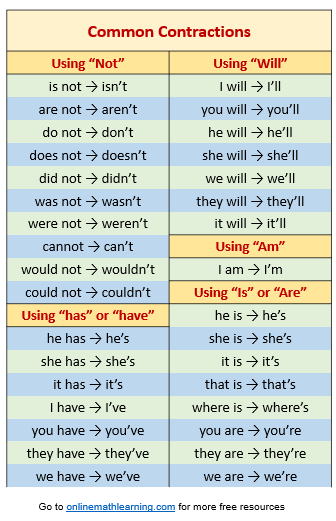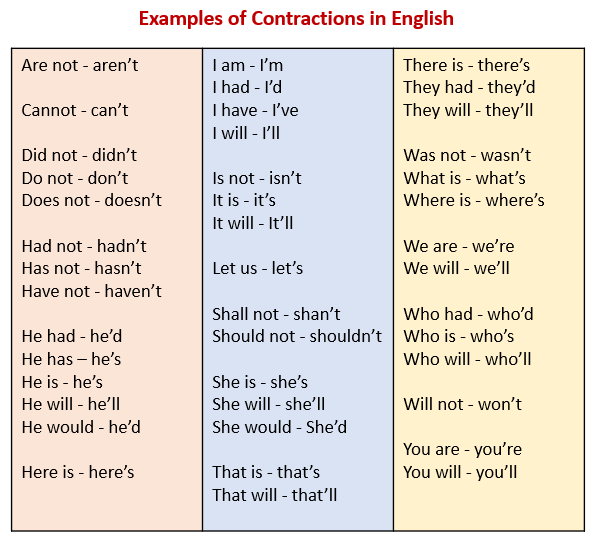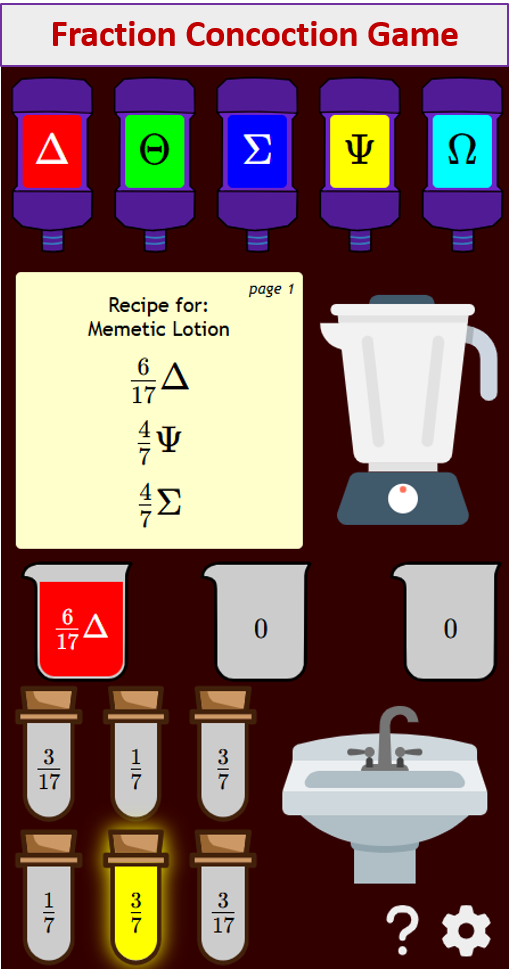Contractions in English for Kids
Videos and songs to help First Grade kids learn how to use contractions to shorten words. An apostrophe is used to take the place of the missing letters. Teaching contractions to kids can be made fun and easy by using simple explanations, visuals, and interactive activities.
What are Contractions?
- Contractions are like “shortened words” or “word shortcuts.” They combine two words into one shorter word.
- Some letters are taken out when the words are joined together, and an apostrophe (’) is used to show where the letters are missing.
- We use contractions all the time when we talk, making our speech faster and smoother.
Start with Simple Contractions
Begin with the most common and easiest-to-understand contractions:
Examples:
is not → isn’t:
We take out the “o” from “not” and put an apostrophe in its place.
he is → he’s
We take out the “i” from “is” and put an apostrophe in its place.
Once the child is comfortable with the basic contractions, you can introduce more, such as:
I am → I’m
he is → he’s
she is → she’s
it is → it’s
you are → you’re
we are → we’re
they are → they’re
I have → I’ve
you have → you’ve
he has → he’s
she has → she’s
we have → we’ve
they have → they’ve
will not → won’t
would not → wouldn’t
cannot → can’t
did not → didn’t
could not → couldn’t
The following diagram shows some examples of common contractions for kids. Scroll down the page for more examples and songs for contractions.

Key Points:
- Contractions are shorter ways to say two words.
- An apostrophe (’) shows where letters are missing.
- We use contractions all the time when we talk and in informal writing.
Regular practice and review are essential for mastering contractions. Use games, worksheets, and real-life examples to reinforce learning.
The following diagram shows some more examples of contractions in English. Scroll down the page for more examples and songs for contractions.

Contractions song
Contractions shorten words and an apostrophe takes the place of the missing letters.
Do not - Don’t
Will not - Won’t
She will - she’ll
He will - he’ll
Has not - Hasn’t
Have not - Haven’t
He is - He’s
She is - She’s
I had - I’d
I will - I’ll
Who had - Who’d
Who will - Who’ll
I am - I’m
I have - I’ve
Contractions Songs for Kids
Are not - aren’t
Did not - didn’t
Does not - doesn’t
Had not - hadn’t
He had - he’d
Is not - isn’t
It is - it’s
Let us - let’s
Cannot - can’t
shall not - shan’t
That is - that’s
There is - there’s
They had - they’d
They will - they’ll
Some examples of contractions
He would - He’d
She would - She’d
What is - What’s
You are - You’re
Was not - Wasn’t
Should not - Shouldn’t
Here is - Here’s
Where is - Where’s
Let us - Let’s
It will - It’ll
We will - We’ll
You will - You’ll
What will - What’ll
That will - That’ll
Who is - Who’s
We are - We’re
Learning Phonics
| Short Vowels | ||
|---|---|---|
| Short A | Short E | Short I |
| Short O | Short U | Short Vowels |
| Long Vowels | ||
|---|---|---|
| Long A | Long E | Long I |
| Long O | Long U | Y (vowel) |
| Long Vowels | Short, Long Vowels | Rhyming Words |
| Short & Long Vowels | ||
|---|---|---|
| Short & Long A | Short & Long E | Short & Long I |
| Short & Long O | Short & Long U | Short I & Long E |
The following printable worksheets can be used to practice writing CVC words while reinforcing reading.
| Free Printable Worksheets (CVC Words) | |
|---|---|
| Set 1 Match CVC Words Write CVC Words Match & Write Spell CVC Words Sort CVC Words |
Set 2 Match CVC Words Write CVC Words Spell CVC Words Sort CVC Words Match Phrases |
| Set 3 Match CVC Words Write CVC Words Spell CVC Words Sort CVC Words Match Phrases |
CVC, CCVC or CVCC Match Words Write Words |
| Consonant Digraphs | ||
|---|---|---|
| CH Sound | SH Sound | Soft TH |
| Hard TH | WH Sound | PH Sound |
| GH Sound | NG Sound | Consonant Digraphs |
Free Printable Worksheets for Consonant Digraphs
These worksheets focus on the consonant digraphs: ch, sh, th, qu and ng.
| Printable Worksheets (Consonant Digraphs) | |
|---|---|
|
Learning "ch" |
Learning "sh" |
|
Learning "th" |
Learning "qu" |
|
Learning "ng" |
|
Free Printable Worksheets for Digraphs
| Printable Worksheets (EE, OO, OU, OI, AW) | |
|---|---|
|
EE Words |
OO Words |
|
OI Words |
AW Words |
Types of Verbs
Action Verbs
Is, Am, Are
Has, Have
Spelling Rules for Verbs
Adding -ed
Irregular Verbs
Adding -ing
Others
Rhyming Words
Sentence Types
Contractions
Possessive Nouns
Try out our new and fun Fraction Concoction Game.
Add and subtract fractions to make exciting fraction concoctions following a recipe. There are four levels of difficulty: Easy, medium, hard and insane. Practice the basics of fraction addition and subtraction or challenge yourself with the insane level.

We welcome your feedback, comments and questions about this site or page. Please submit your feedback or enquiries via our Feedback page.